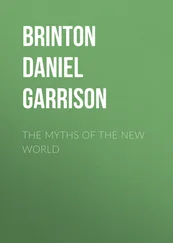The tension in Spain between the big central state and the miniature world of the pueblo preceded Franco, and even Primo de Rivera, the country’s proto-fascist dictator from 1923–30. There has long been a sense of a distant, imposing political class who do not understand the local ways and needs of each pueblo , in their many and varied forms. It’s the same rhetoric you might hear in American election races about Washington, D.C., the remoteness of power, both geographically and in terms of its comprehension of local realities. Centralism, wrote the marinaleños behind the hunger strike pamphlet, is ‘the origin of all our old problems, since the end of the nineteenth and across the twentieth century, and the cause of all our riots, our demands, and our revolutionary movements.’ Struggle, they continue, is the heritage of the Andalusian people – un pueblo combativo , a pugnacious people, and the methods (crop burnings, strikes, land occupations) have long been the same, as has the enemy on the ground, the Guardia Civil, with their ‘centuries in the service of the landowners’.
In the towns of Andalusia, wrote Gerald Brenan in his classic 1943 text The Spanish Labyrinth , ‘the atmosphere of hatred between classes has to be seen to be believed. Since the Republic came in, many landlords have been afraid to visit their estates. And the labourers are all Anarchists. What else can one expect under such conditions – miserable pay, idleness for half the year and semi-starvation for all of it?’ The jornaleros , the day labourers of villages like Marinaleda, lived without smallholdings or allotments to grow food for basic family subsistence during the six months they were without work. Without credit from the shops of the pueblo during the lean times, or the gift of a loaf of bread from one’s neighbours now and then, even more would have died of malnutrition.
While the jornaleros ’ poverty was often fatal, hundreds of thousands of acres of the aristocratic-owned arable lands around them were left uncultivated, adding greater insult to the labourers’ injurious poverty. These lands were sometimes used for breeding bulls or horses, or in the case of a 56,000-acre tract of land west of Marinaleda, simply as a shooting estate. The class hatred flowing in one direction was matched only by the disinterest flowing in the other. Brenan records a visit in the 1930s by the Duke of Alba, father of Marinaleda’s nemesis, the current duquesa , to some of the vast lands he owned in Andalusia. He arrived, wrote Brenan, ‘with an equipment of lorries and tents, as though he were travelling in the centre of Africa’. Meanwhile, starving labourers who attempted to plough the fallow land were beaten by the police.
Estepa, Marinaleda’s nearest moderately-sized neighbour, with a population of 12,000, is famous for three things: biscuits, bandits and mass suicide. The biscuits in question are Christmas delicacies called mantecados , and every winter entire buses are chartered from Seville and Malaga, filled with people eager to stock up for the festive season. Mantecados (pronounced man-teh-cow in the impenetrable local accent) taste a bit like grenades of sugared dirt, and weigh about the same. And yet, it’s not Estepa’s confectionery that lingers longest in the stomach. In the year 208 BC, the residents of what was then a small but significant hilltop outpost of Carthage saw the Roman army in the distance, coming to seize the town. By the time the Romans arrived, every last citizen of Estepa was dead – the whole population had committed suicide rather than surrender. The town was later captured by Visigoths, and then by a series of rival Moorish caliphs, followed eventually by the Christian Reconquista .
One day, Javi and I took a walk up Estepa’s San Cristóbal hill to look at its multicultural relics, our toes tensing to grip the harsh gradient, feeling the cobbles as we climbed through and above the town itself. The final stretch of the hill was so steep that my lungs took a beat to catch up, and even in the relative chill of January, tiny beads of sweat grew on my forehead, immediately turning cold in the breeze. There was no one at the top, and no wind either. The church tower was a fancy peach-coloured extravagance, a bohemian cake of a building drawn straight from an Aesop’s fable.
The view from here is known as the Balcón de Andalucía , the Balcony of Andalusia. Here you can see Marinaleda to the north, on the gentle slope down towards the great Guadalquivir River that brings life to the otherwise parched region. The river was once the glittering conduit for masses of Spanish gold violently plundered from the New World. Estepa looked especially pretty, with its staggered cascade of white walls and red roofs falling away down the hill beneath us, poised delicately above the regiments of endless olive groves and rich green fields dulled by the orange pastel-dust.
This land, the basin of the Guadalquivir, is often dry, but not unfertile: as with all of rural Andalusia, it is concentrated in very few hands – either the aristocratic families of old Castile, or the middle classes, who took the opportunity in the nineteenth century to buy up (at low cost) terrain that had previously been common or Church lands. ‘ ¡Corazón de Andalucía! ’ proclaimed the signage of a disused hotel on the edge of Estepa, with the unselfconscious pride of a flamenco dancer flicking her castanets. This is indeed the heart of the region: you’re a pretty long way from anywhere, but you can see everywhere .
We stood on a wooden viewing platform and watched the dark close out on Estepa below us. From here you can see three sub-regions of Andalusia – Seville, Cordoba and Granada – and amid the fields, the sparsely-scattered pueblos in the distance: El Rubio, Casariche, Herrera, and Marinaleda itself. Of course, at that distance these small farming communities all look the same. So much that is in them is the same: children kicking cheap footballs against stone walls worn down by the centuries, Cruzcampo umbrellas dozing gently outside tapas bars. And yet, like Asterix’s village in Gaul, impossibly holding out against the Romans, Marinaleda is surrounded by villages that lie in enemy hands.
It’s an area which, because of its often desperate levels of poverty, has long given itself to people’s heroes, for good or ill. And before the anarchists and communists arrived, there were the bandoleros , the bandits – normally involved in smuggling, extortion, and highwayman-style hold-ups. Even the bandits, writes Kaplan, ‘were a friend of the poor and its champion against its oppressors … a safety-valve for popular discontent’. There are even tours celebrating this grisly part of local history – though where the likes of El Tempranillo, El Pernales or El Lero fit on a spectrum of malevolence from Robin Hood to Jack the Ripper depends on who you speak to. These weren’t true popular heroes, Javi explained to me. They were horrendous murderers, living in defiance of the law and using the masses as human shields against the authorities.
In the face of such danger, the Guardia Civil, or paramilitary police force, was founded in the mid-nineteenth century for the express purpose of tackling banditry in this part of Andalusia. The local landscape was the bandits’ friend. Late one cold February night, driving back towards Estepa from a pre-Lenten carnaval in another town, Javi and his friend Antonio explained that the tree-covered hills were considered too dangerous for exploring alone – there was a white dog in there that would eat you alive. This is presumably where the bandits used to hide, too, I asked – a slightly more realistic danger? ‘That’s right,’ said Javi. Antonio chuckled to himself from the back seat.
Читать дальше












